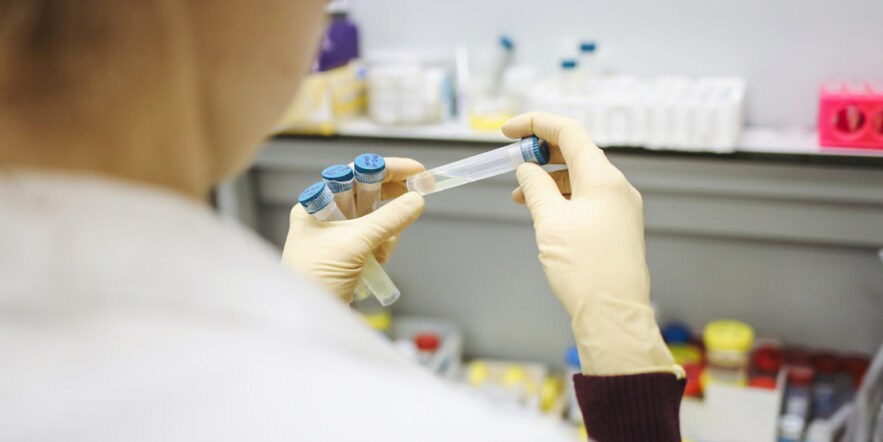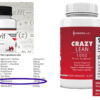The giddy excitement generated by Pfizer’s COVID-19 vaccination interim results of 90% efficacy on November 11 was only boosted higher by Moderna’s announcement on November 16 of 95% efficacy for its vaccination. Less than a week later Pfizer updated to final results compiling the results of 170 COVID cases, 6 more than the minimum cut-off.
Those people hesitating to join in the celebration based on Pfizer’s limited information (me) got more assurance from Moderna’s more complete and insightful press release. Neither company has released a full report or analysis of their data, nor have they announced an intent to do so soon. An independent panel of experts is reviewing the data from both companies.
The similar efficacy results were predicted by Dr. Anthony Fauci, the director of the National Institute of Allergy and Infectious Diseases, who told the Financial Times, the Moderna vaccine, is “identical in many respects” to the Pfizer vaccine.
Both Moderna and Pfizer need 70 or so more cases of COVID-19 to be diagnosed in their testing groups, but the pace of the number of reported COVID-19 cases led both companies to project they will complete the analysis of all cases required and be able to file for Emergency Use Authorization with the FDA before December.
Both the Moderna and Pfizer vaccinations require that participants get a second shot within a specified time period after the first. That follow-up for the second shot demands twice as much shipping, twice as many vials and needles, both of which are in limited supply now. The challenge for both Pfizer and Moderna is to ensure that participants come back for the second shot within the prescribed time frame. Making that happen is especially tricky for those living in rural areas, those with inflexible work schedules and those in less-developed countries.
Below are some of the differences between the two vaccinations. We have also created a handy chart for comparison.
[table “1” not found /]For your reference, check out the press releases from Pfizer and Moderna. Unless otherwise indicated, quotes below are from these press releases from Pfizer and Moderna.
Browse This Article
Safety
Why is safety important? Many drugs yield unforeseen side effects that can cause long-term harm or great temporary discomfort and interact poorly with certain medications. Any side effects need to be determined before millions of people take it.
Pfizer
Pfizer’s release makes a vague, broad statement, “The DMC (the independent review panel) has not reported any serious safety concerns and recommends that the study continue to collect additional safety and efficacy data as planned. The data will be discussed with regulatory authorities worldwide.”
Moderna
Moderna states more clearly: “The majority of adverse events were mild or moderate in severity. Grade 3 (severe) events greater than or equal to 2% in frequency after the first dose included injection site pain (2.7%), and, after the second dose, included fatigue (9.7%), myalgia (8.9%), arthralgia (5.2%), headache (4.5%), pain (4.1%) and erythema/redness at the injection site (2.0%). These solicited adverse events were generally short-lived. These data are subject to change based on ongoing analysis of further Phase 3 COVE [name of the Moderna trial] study data and final analysis.
“Preliminary analysis suggests a broadly consistent safety and efficacy profile across all evaluated subgroups.”
Diversity in test volunteers
Why is diversity important? Including diverse populations helps ascertain how the vaccination will work in the people who are most at risk for COVID-19. If tested only on healthy middle-age white adult males, which has historically been a limitation of drug testing, we would be left unaware of its effectiveness among various ethnic and age groups, and potentially leave out those who need it the most.
Moderna
“The 95 COVID-19 cases included 15 older adults (ages 65+) and 20 participants identifying as being from diverse communities (including 12 Hispanic or LatinX, 4 Black or African Americans, 3 Asian Americans and 1 multiracial).
“The COVE study includes more than 7,000 Americans over the age of 65. It also includes more than 5,000 Americans who are under the age of 65 but have high-risk chronic diseases that put them at increased risk of severe COVID-19, such as diabetes, severe obesity and cardiac disease. These medically high-risk groups represent 42% of the total participants in the Phase 3 COVE study. The study also included communities that have historically been under-represented in clinical research and have been disproportionately impacted by COVID-19. The study includes more than 11,000 participants from communities of color, representing 37% of the study population, which is similar to the diversity of the U.S. at large. This includes more than 6,000 participants who identify as Hispanic or LatinX, and more than 3,000 participants who identify as Black or African American.”
Pfizer
“Study enrolled 43,538 participants, with 42% having diverse backgrounds.” Ethnic and sex breakdowns are listed on its website.
Storage Requirements
Why are storage requirements key? Vaccines must be stored and transported in ways that preserve the active ingredients. If mishandled, the vaccine may be rendered useless.
Moderna
For shipping and longer-term storage the vaccine needs a temperature of -4°(-20°C), equal to most home or medical freezer temperatures. After thawing, the vaccine will remain stable at standard refrigerated conditions of 2° to 8°C (36° to 46°F) for up to 30 days within the six-month shelf life. Once the vaccine is removed from the refrigerator for administration, it can be kept at room temperature for up to 12 hours.
Pfizer
Its vaccine needs to be shipped and stored at -94° (-70°C), which requires a medical freezer, equipment that many rural communities don’t have.







